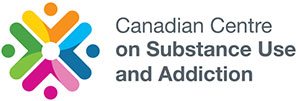About 22% of Canadians over the age of 15 years old use psychoactive prescription drugs in some form according to the 2017 Canadian Tobacco, Alcohol and Drugs Survey. There is an urgent challenge to reduce the related harms of prescription drugs while ensuring timely and appropriate access to them for medical applications. This challenge is particularly pressing for opioids, but also for stimulants and sedatives. CCSA synthesizes research on demographic and use trends for psychoactive prescription drugs, provides targeted materials on associated issues, and fosters relationships that support prevention, harm reduction, treatment and recovery efforts.
What Are Prescription Drugs?
Prescription drugs are medications prescribed to a patient by a health professional to help manage health conditions. These medications are regulated by Health Canada through the Food and Drugs Act to ensure their safety, effectiveness and quality. Many prescription drugs have an acceptable safety profile when used as prescribed, but can also be intentionally or unintentionally misused (e.g., taken in larger doses than prescribed or by a different route of administration) or used for non-medical reasons without a prescription. Misuse and non-medical use can lead to problematic use patterns and negative health outcomes. Engaging in behaviours prohibited by the label (e.g., driving or operating heavy machinery), even when the drug is used as directed, can also have problematic consequences.
There is a variety of prescription drugs available on the market — taking the form of capsules, syrups, skin patches and liquids for injection — which are used to help patients’ health conditions. Of these, the most commonly used varieties that can lead to problematic use are:
- Opioids, which can help treat pain;
- Sedatives, which can help relieve anxiety and assist with sleep problems; and
- Stimulants, which can help treat individuals with attention deficit hyperactivity disorder (ADHD).



